Use Eclipse to develop and debug Web Builder projects
Download and install the Groovy plug-in:
Download address: Groovy-Eclipse
Download and install the Tomcat plug-in:
Download address: Tomca-Eclipse
Open Eclipse and configure the Tomcat plug-in as shown below:
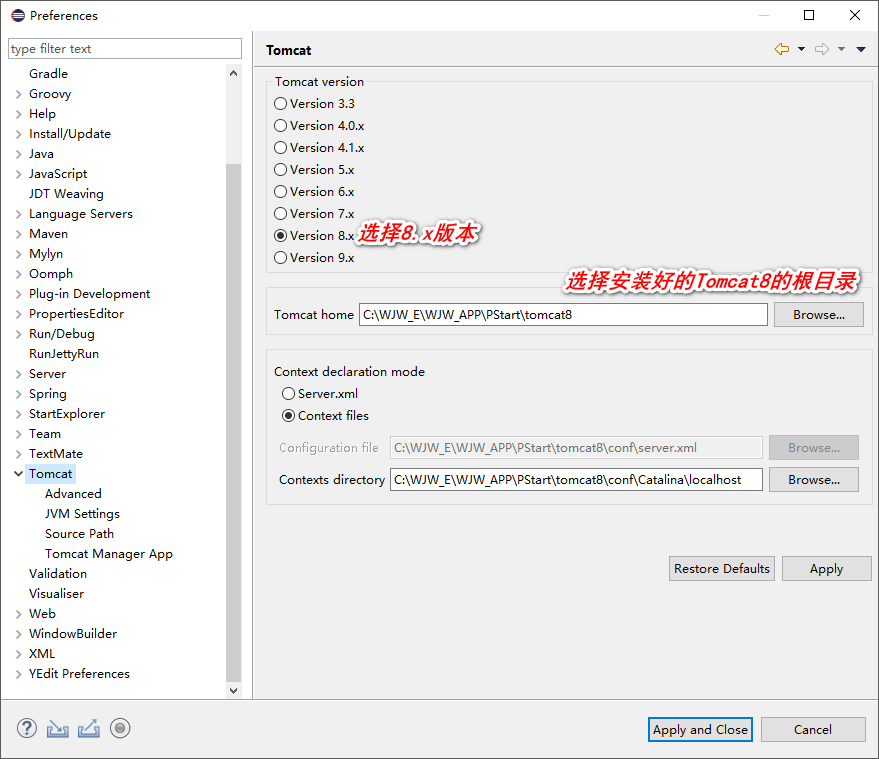
Create a new Java Project project
Name it WB8 and add Groovy support in the right-click menu of the project! As shown below:
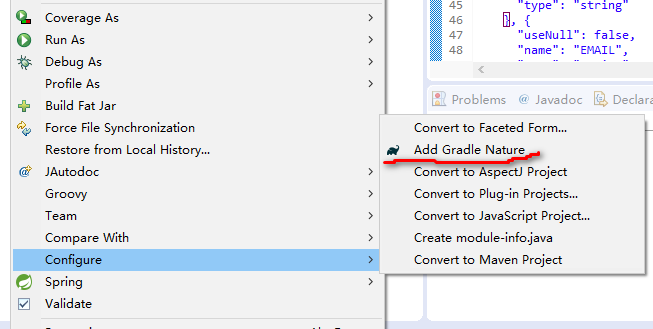
Open the project property configuration window
Configure Tomcat as follows:
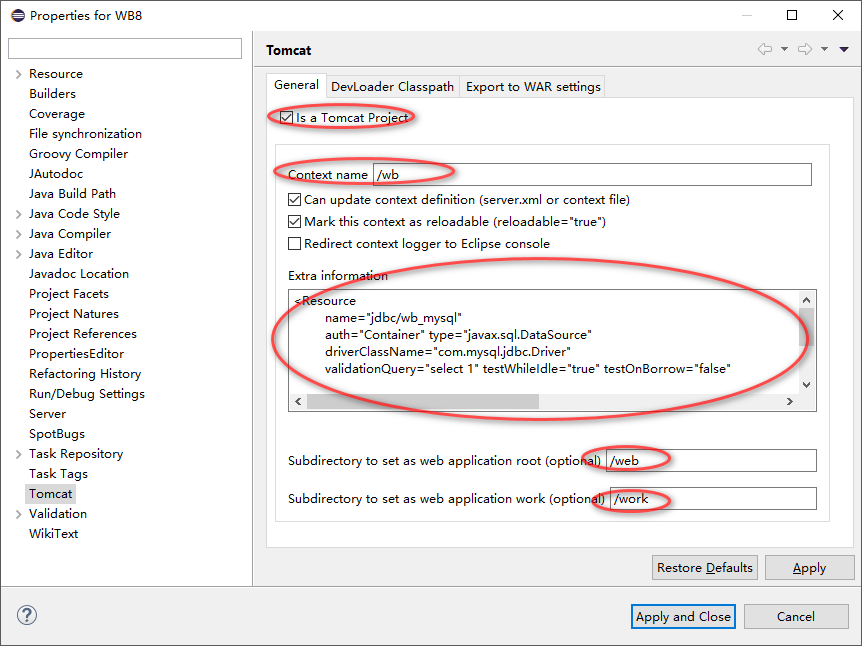
Enter JNDI data sources in Extra information, such as:
<Resource name="jdbc/wb_mysql" auth="Container" type="javax.sql.DataSource" driverClassName="com.mysql.jdbc.Driver" validationQuery="select 1" testWhileIdle="true" testOnBorrow="false" url="jdbc:mysql://127.0.0.1:3306/wb?autoReconnect=true&allowMultiQueries=true&useUnicode=true&characterEncoding=utf-8&mysqlEncoding=utf8" username="root" password="XXXXXX" maxActive="20" maxIdle="10" maxWait="-1" />
Copy WebBuilder Application Directory
Create a new web directory under the project's root directory and copy everything in the / wb directory of the compressed file webbuilder.zip to the new web. The final directory structure is shown in the following figure:
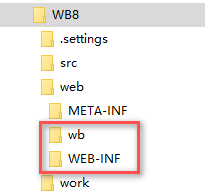
Update the Context of the project
Update the WB8 project context information to Tomcat's tomcat8/conf/Catalina/localhost directory, as shown in the following figure:
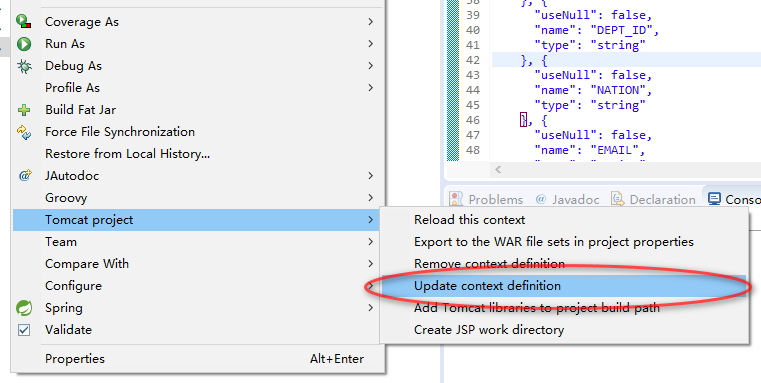
The contents of the file wb.xml are as follows:
<Context path="/wb" reloadable="true" docBase="C:\WJW_E\WJW_DATA\OpenSource\WebBuilder\eclipse_workspace\WB8\web" workDir="C:\WJW_E\WJW_DATA\OpenSource\WebBuilder\eclipse_workspace\WB8\work" > <!-- Extra info begin --> <Resource name="jdbc/wb_mysql" auth="Container" type="javax.sql.DataSource" driverClassName="com.mysql.jdbc.Driver" validationQuery="select 1" testWhileIdle="true" testOnBorrow="false" url="jdbc:mysql://127.0.0.1:3306/wb?autoReconnect=true&allowMultiQueries=true&useUnicode=true&characterEncoding=utf-8&mysqlEncoding=utf8" username="root" password="XXXXXX" maxActive="20" maxIdle="10" maxWait="-1" /> <!-- Extra info end --> </Context>
Increase Groovy support
- Copy groovy-all-X.X.X.jar to WEB-INF/lib/directory
Modify Java Build Path and add all jar files in WEB-INF/lib directory to Libraries!
As shown in the following figure:
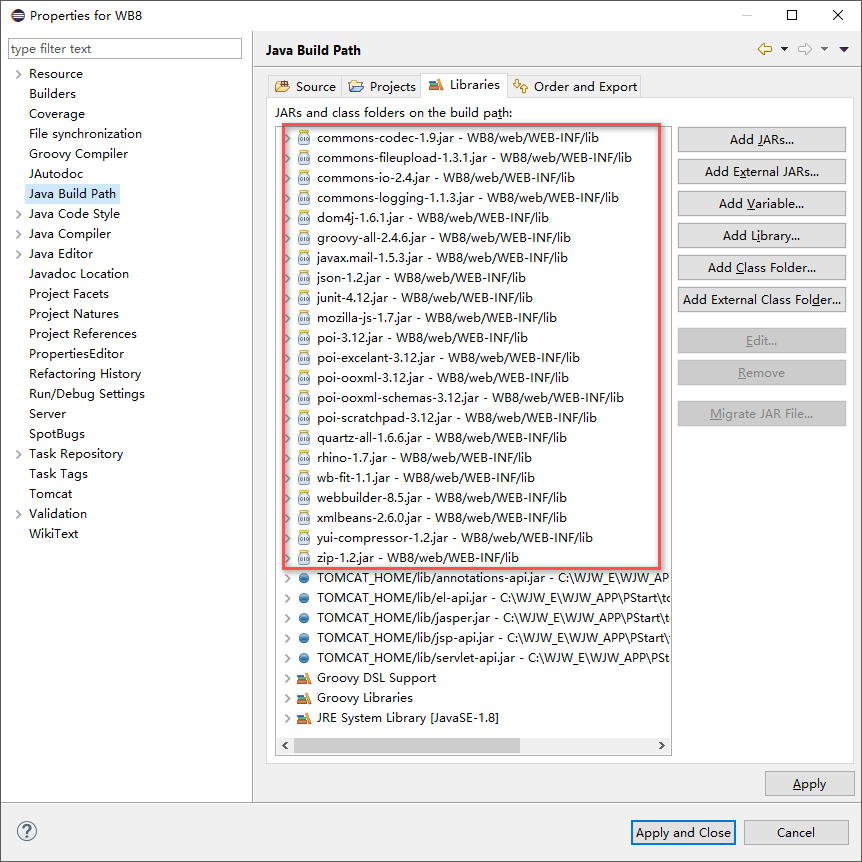
- Modify the file WEB-INF/web.xml and add:
<servlet> <servlet-name>GroovyServlet</servlet-name> <servlet-class>groovy.servlet.GroovyServlet</servlet-class> <init-param> <param-name>verbose</param-name> <param-value>false</param-value> </init-param> <init-param> <param-name>logGROOVY861</param-name> <param-value>true</param-value> </init-param> <init-param> <param-name>resource.name.regex</param-name> <param-value>gdo$</param-value> </init-param> <init-param> <param-name>resource.name.replacement</param-name> <param-value>groovy</param-value> </init-param> <load-on-startup>2</load-on-startup> </servlet> <servlet-mapping> <servlet-name>GroovyServlet</servlet-name> <url-pattern>*.gdo</url-pattern> </servlet-mapping>
- Write the test file WEB-INF/groovy/test.groovy. (According to the agreement, WEB-INF/groovy is the root directory of groovy file!)
def builder = new groovy.json.JsonBuilder() builder.people { person { firstName 'Guillame' lastName 'Laforge' // Named arguments are valid values for objects too address( city: 'Paris', country: 'France', zip: 12345, ) married true // a list of values conferences 'JavaOne', 'Hello' } } out << "General output:"+builder.toString() out << "<br>\r\n Format output:" out << builder.toPrettyString()
- Add authority judgment Use the Wb.request method or url to refer directly and then define the accessible roles in groovy to determine whether there are execution privileges! For example:
//xwl file Wb.request({ url: 'test.gdo', params: { foo: 'abc', bar: 123 }, success: function(response) { app.textarea1.setValue(response.responseText); Wb.info(response.responseText); } }); //groovy file def needRoles=['default','admin']*.toUpperCase() def currentRoles = com.wb.common.Session.getRoles(request).toList()*.toUpperCase() //Judgement role //Any role if(!currentRoles.any { needRoles.contains(it) }) { com.wb.util.SysUtil.accessDenied(request); } //Or all roles if(!currentRoles.containsAll(needRoles)) { com.wb.util.SysUtil.accessDenied(request); }
- Modify Java Build Path and add WEB-INF/groovy, the root directory of groovy file, to Source so that breakpoint debugging can be done!
As shown in the following figure:
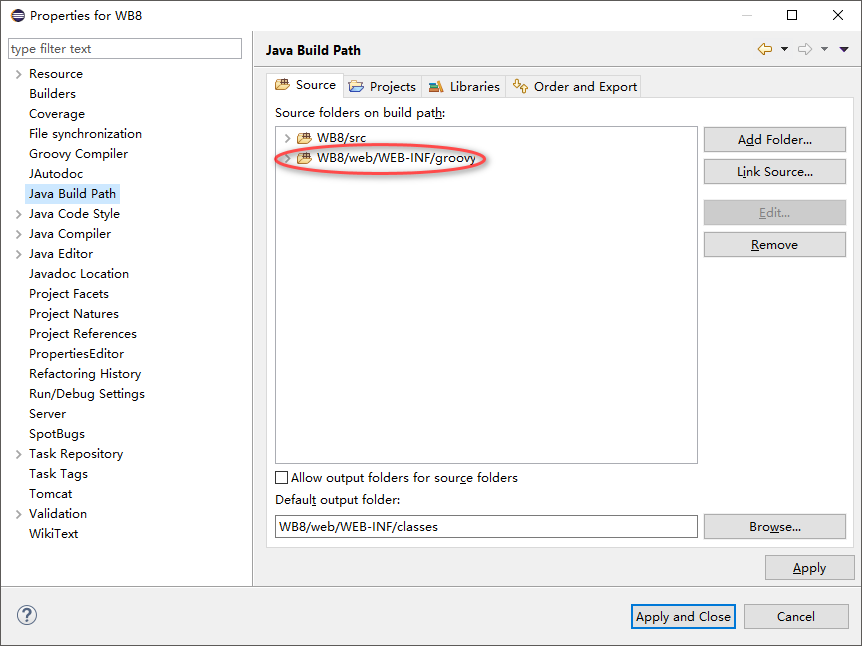
Start the Web Builder project
As shown in the following figure:
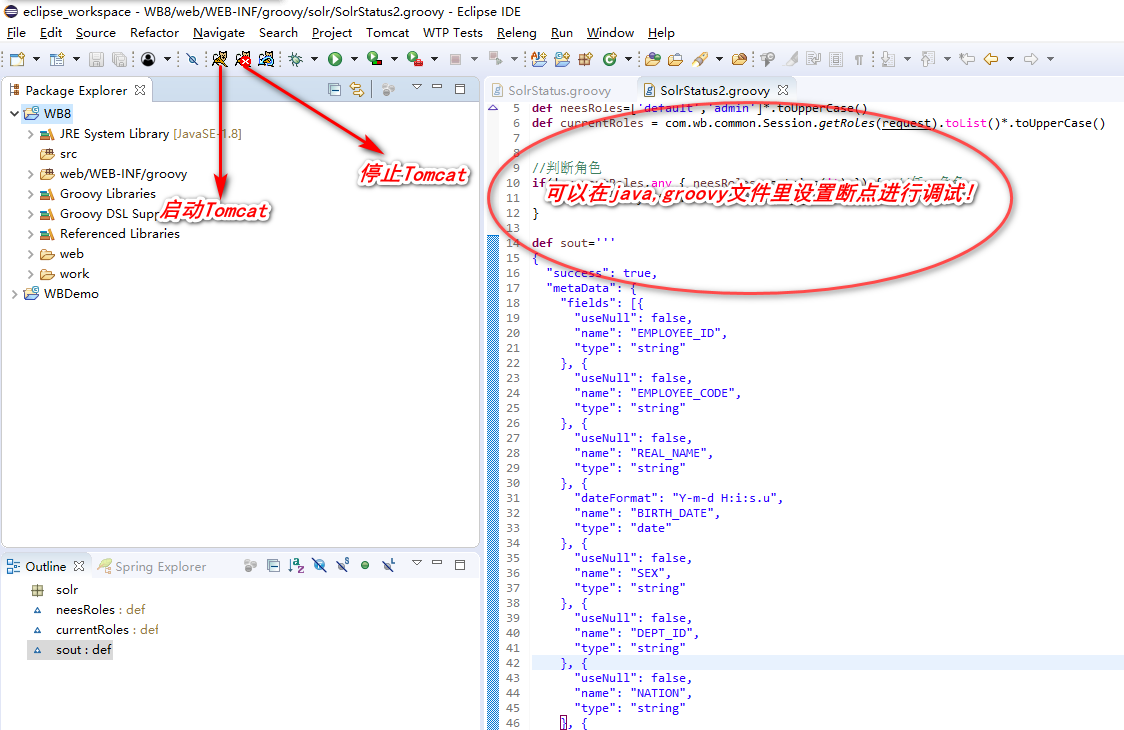
Finally, open the browser
Enter http://localhost:8080/wb/, develop and debug!